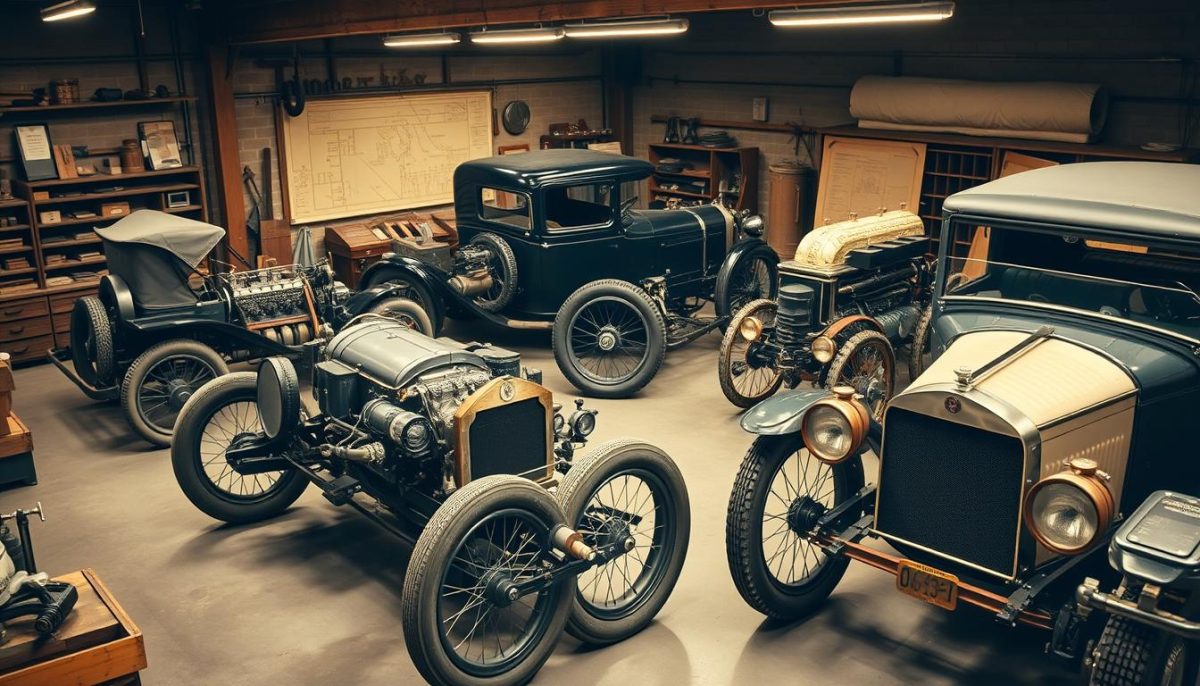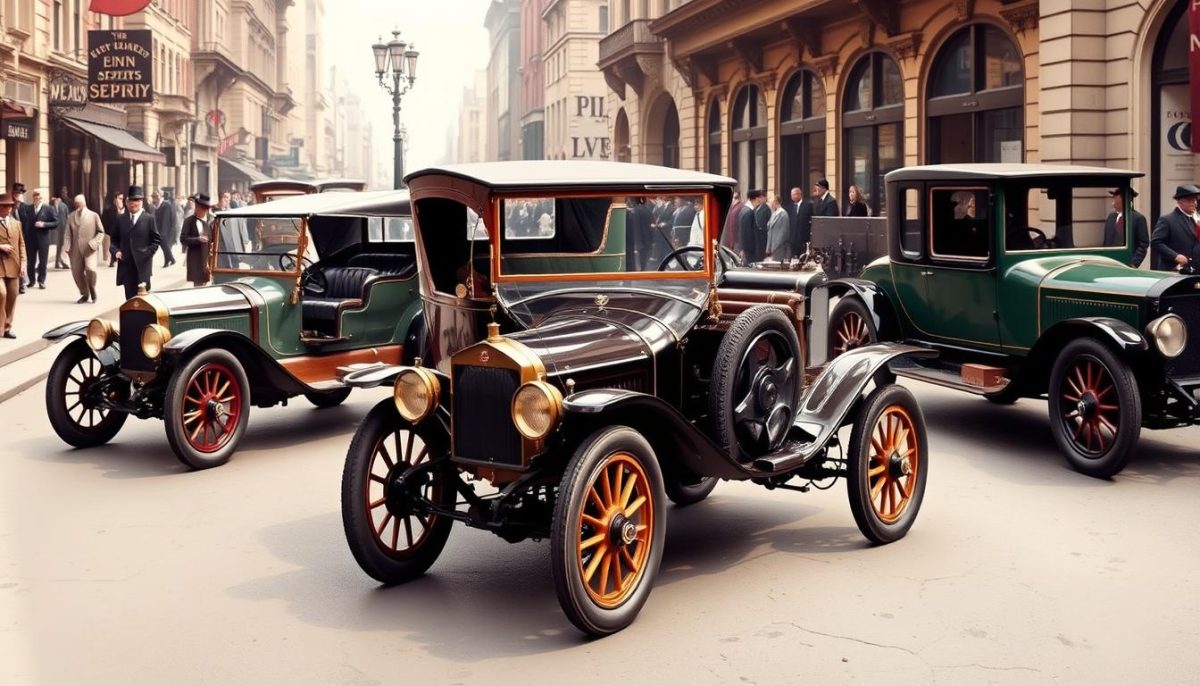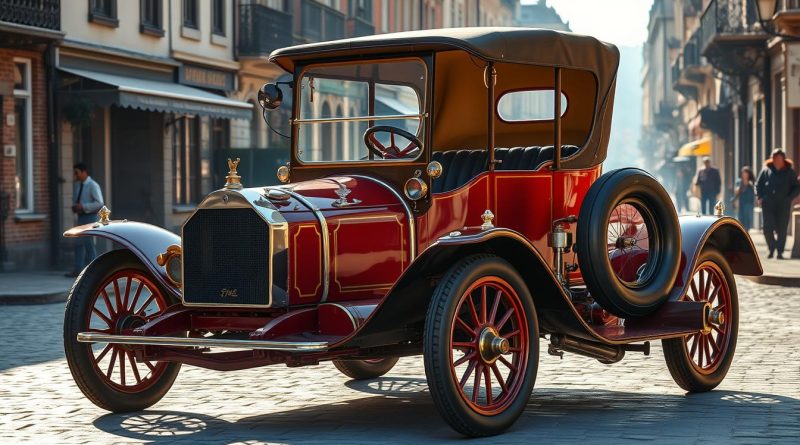Four cylinder FNs, 1905-1914
The early 20th century marked a significant chapter in automotive history, particularly through the innovations brought forth by the FN company. Initially renowned for their firearms, FN diversified their expertise into early automotive design, launching a series of four cylinder engines between 1905 and 1914. This transition was pivotal, enabling FN to carve out a niche in the automotive sector with engines that offered a remarkable balance of efficiency and power.
During this transformative period, the four cylinder FN engines emerged as a game-changer, elevating the standards of engine performance in vehicles. With their commitment to reliability and innovation, FN not only captured the attention of early motorists but also set the stage for future advancements in automotive engineering.
The Evolution of Four Cylinder FNs
The introduction of four cylinder engines represented a significant milestone in automotive history. FN played an integral role in this evolution, transforming how vehicles functioned and perceived the driving experience. The advancement from two-cylinder to four-cylinder engines brought about marked improvements in both performance and reliability, making cars more accessible to a broader audience.
The Introduction of Four Cylinder Engines
The early 20th century saw FN’s innovative approach to engine design, characterized by lightweight construction and enhanced power output. The FN engine features, such as its unique crankshaft design and balanced components, optimized engine efficiency, leading to smoother rides that were previously unattainable with earlier designs. These innovations supported the drivetrain’s overall effectiveness, significantly improving fuel consumption and vehicle handling.
Key Technological Advancements in the Early 1900s
Various automotive technology advancements emerged during this pivotal time. Electric ignition systems revolutionized engine start-up processes, while improved manufacturing techniques minimized production costs and time. FN embraced these developments, integrating modern methods with their engine designs. Ultimately, these early 20th century automotive innovations not only enhanced vehicle performance but also set the foundation for future advancements in engine technology.

| Feature | FN Four Cylinder Engines | Two Cylinder Engines |
|---|---|---|
| Weight | Lightweight construction for agility | Heavier, less nimble |
| Power Output | Enhanced power for improved performance | Limited power, less efficient |
| Fuel Efficiency | Significantly better mileage | Higher fuel consumption |
| Operating Smoothness | Smoother operation, less vibration | More vibration and noise |
Four Cylinder FNs, 1905-1914: A Key Era in Automotive History
The period from 1905 to 1914 serves as a pivotal chapter in the significance of four cylinder FNs. During these years, FN established itself as a strong contender in the automotive landscape through innovative designs and powerful engineering that resonated with consumers and critics. The automotive design legacy from this era has capacity for broader historical context.
Intense early automotive competition pushed manufacturers like FN to exceed performance expectations and aesthetics. The four cylinder models were among the most celebrated for their reliability and cutting-edge technology. This time witnessed the evolution of various models, signaling FN’s commitment to advancing vehicle performance. The FN automotive timeline from this period reflects the brand’s drive for innovation and adaptation to market demands.
FN vehicles not only captivated car enthusiasts but also left an indelible mark on popular culture, often showcasing their prowess in motorsport events. Their participation in races contributed significantly to their reputation, further embedding them in the automotive design legacy. Four cylinder FNs became symbols of engineering excellence, shaping the future of automobile design and development. Notably, this transformative era laid the groundwork for future advancements in the industry.

| Year | Model | Engine Type | Notable Features |
|---|---|---|---|
| 1905 | FN 12 HP | Four Cylinder | First model with overhead valves |
| 1908 | FN Type B | Four Cylinder | Improved chassis design |
| 1910 | FN Type C | Four Cylinder | High performance racing model |
| 1914 | FN 24 HP | Four Cylinder | Enhanced stability and speed |
Impact and Legacy of Four Cylinder FNs
The impact of four cylinder FNs on the automotive landscape remains significant, shaping not only the models produced by FN themselves but serving as a touchstone for many manufacturers that followed. The innovations introduced during 1905 to 1914 played a crucial role in establishing engineering standards that continue to resonate in today’s automotive designs. These engines highlighted advancements in efficiency, power, and driving experience, creating a benchmark that modern vehicles still strive to meet.
In terms of FN historical significance, the company set a precedent in balancing performance and practicality in their four cylinder engines. This not only boosted consumer expectations but also influenced future designs across the industry. Manufacturers began to recognize the value of a well-engineered four cylinder setup, thus steering their research and development efforts towards similar configurations. The success of FN’s early models illustrated that compact and lightweight engines could provide satisfactory power, which has played a pivotal role in automotive evolution.
Today, FN’s automotive legacy is honored by classic car enthusiasts and engineers alike, reflecting the brand’s enduring influence on vehicle design and technology. As modern manufacturers seek inspiration from this era, the principles established by FN continue to inform contemporary automotive standards. By appreciating the historical contributions made by FN and their innovative four cylinder engines, we can better understand the trajectory of automotive development over the past century.

